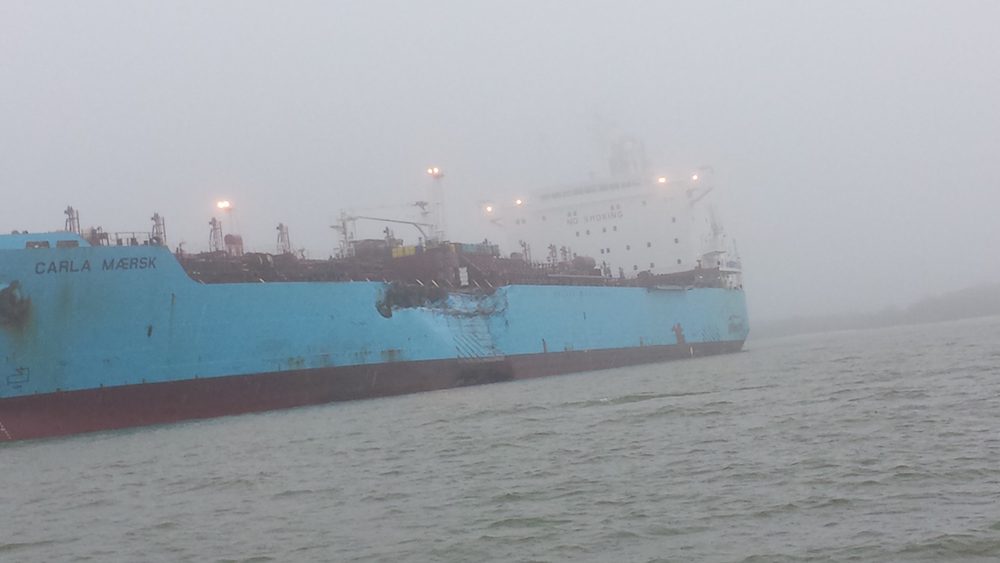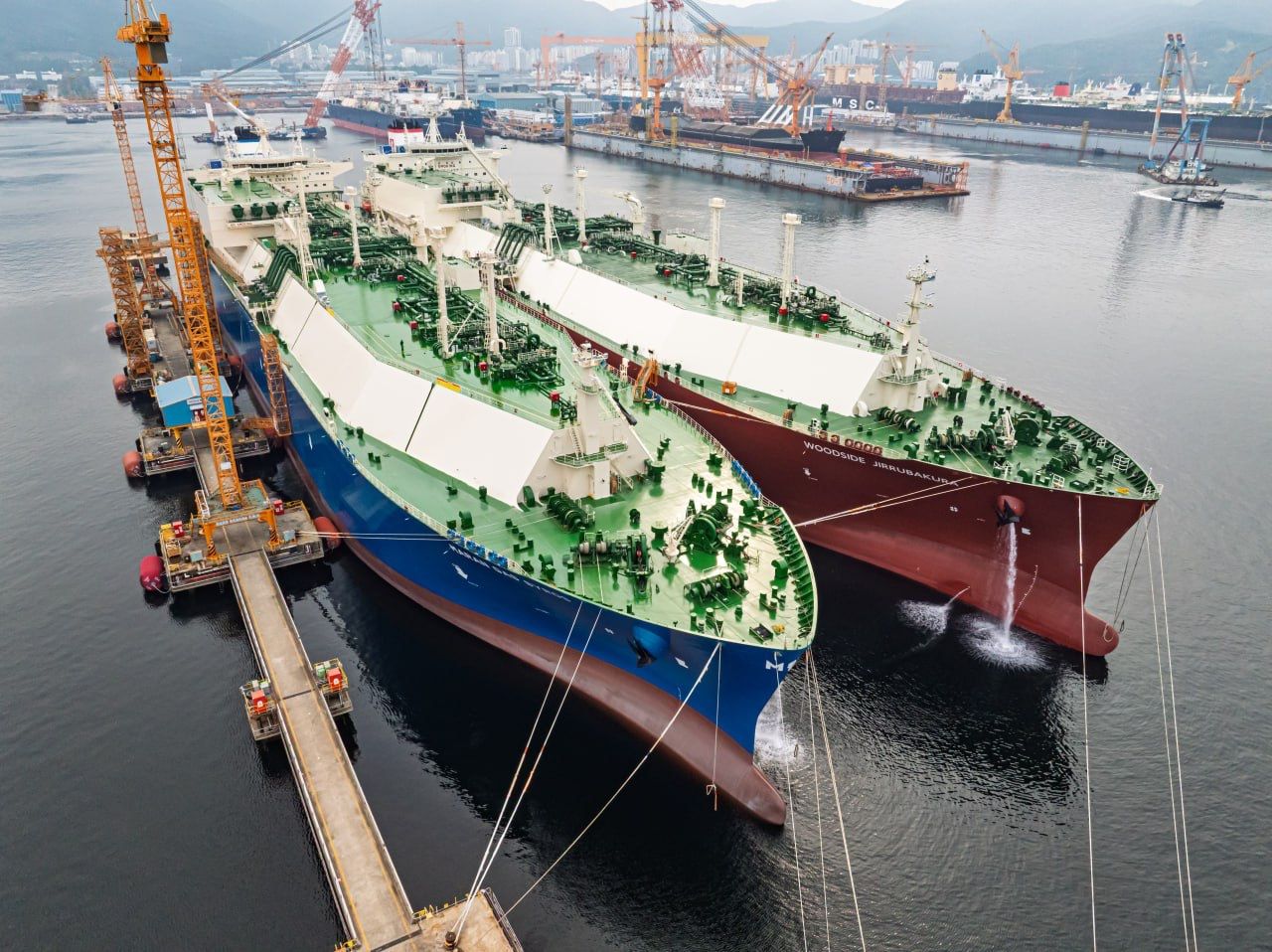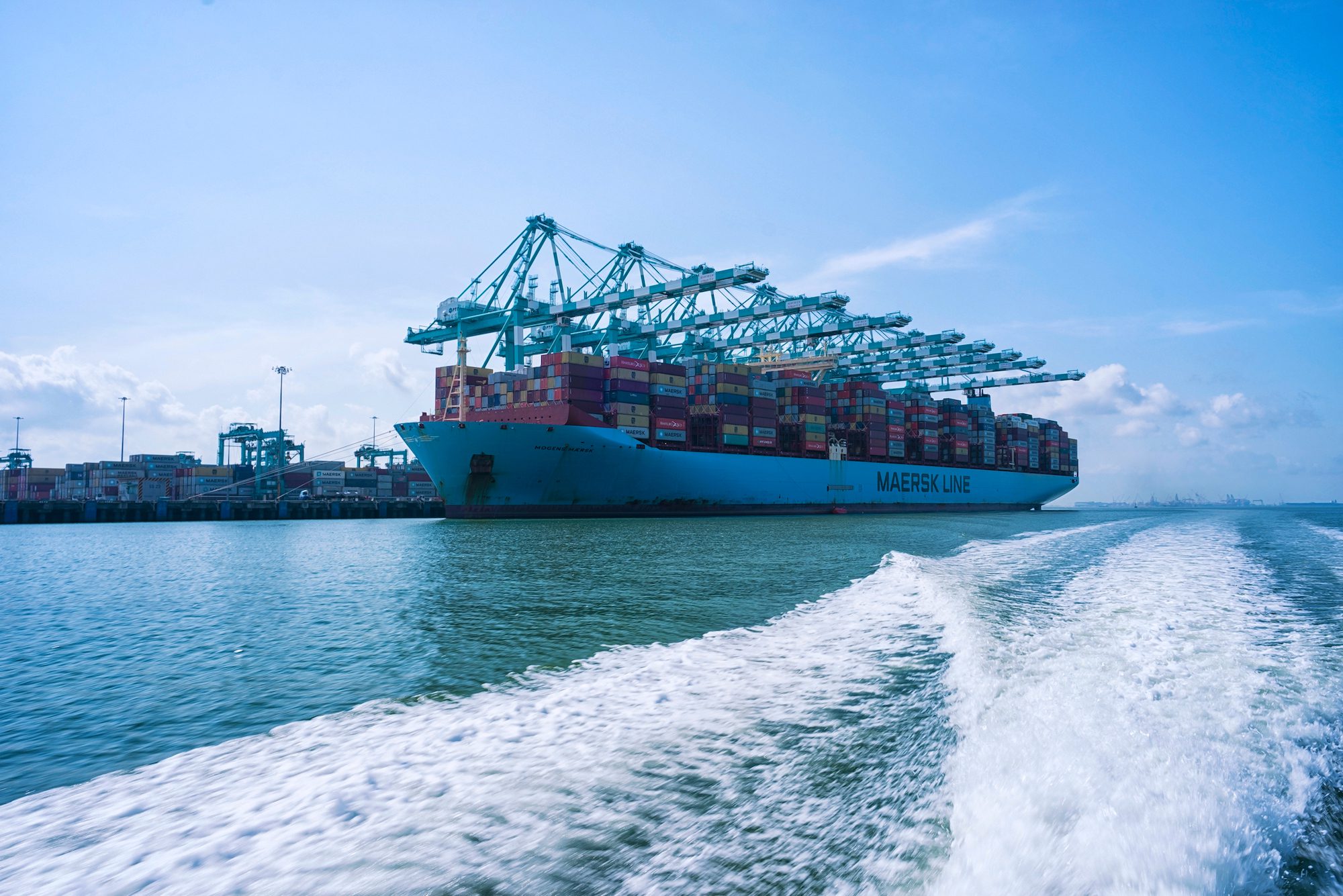The chemical tanker Carla Maersk sits at anchor off Morgans Point, Texas, after being involved in a collision with the bulk carrier Conti Peridot March 9, 2015. U.S. Coast Guard Photo
The NTSB on Friday released its Preliminary Marine Accident Report on the March 9th collision between the chemical tanker MT Carla Maersk and MV Conti Peridot in the Houston Ship Channel near Morgan’s Point in upper Galveston Bay. The collision resulted in damage to the both vessels and the spillage of the fuel additive MTBE from the Carla Maersk. The Houston Ship Channel was shut three days as the result of the accident.
On Monday, March 9, 2015, at about 1231 central daylight time, the Liberian registered, 623-foot-long bulk carrier Conti Peridot and the 599-foot-long Danish flagged chemical tanker Carla Maersk collided near buoys 89 and 90 in the Houston Ship Channel, Upper Galveston Bay, southeast of Morgan’s Point, Texas.
After weighing anchor offshore at the entrance to the Houston Ship Channel and boarding a pilot, the Conti Peridot proceeded inbound at about 0930 up the channel to City Dock 24 to discharge its cargo of steel rolls. About the same time, the Carla Maersk departed Kinder Morgan Terminal in Galena Park, Texas, with a pilot on board and carrying 216,049 barrels (bbls) of methyl tertiary butyl ether (MTBE) outbound for Venezuela.
The Conti Peridot got under way in good visibility. The Carla Maersk departed in light rain with a low cloud ceiling. As the vessels proceeded with their transits, radio transmissions between vessels reported developing fog in the Houston Ship Channel. At 1130, Houston Pilots suspended pilot boarding at the entrance channel due to fog. Piloted vessels already under way continued their transits.
An hour later, with visibility estimated by the Conti Peridot pilot to be a ship’s length, preliminary data indicate both vessels were at half-ahead traveling just over 8 knots as they approached each other south of Morgan’s Point.
The pilot on the Conti Peridot was having trouble returning to the channel center after passing another vessel and initiated a port-to-port passing arrangement with the pilot on the Carla Maersk. After this arrangement was made, preliminary data show the Conti Peridot moved to the left side of the channel and then back to the right. At this time, the Conti Peridot pilot ordered hard starboard and full ahead in an effort to counter his vessel’s anticipated movement to the left. The pilot on the Conti Peridot warned the pilot on the Carla Maersk that he was coming back across the centerline of the channel toward his vessel. When the pilot on the Carla Maersk saw the bow of the Conti Peridot emerge from the fog, he ordered hard starboard and full ahead in an effort to avoid what he perceived to be an imminent collision.
The Conti Peridot’s bow struck the port side of the Carla Maersk, penetrating the two port wing ballast tanks and the no. 4 port cargo tank, which held about 15,495 bbls of MTBE. After the impact, the Carla Maersk developed a port list, and the crew took action to move cargo and ballast to correct the list. No injuries were reported onboard either vessel.
MTBE is a colorless, flammable liquid with a turpentine-like odor; its vapors are heavier than air, and it is miscible in water. The Houston Port Authority initially responded to the incident due to the release of hazardous materials, and a Unified Command was established soon after the collision to manage the emergency response operations and planning.
The US Coast Guard classified the accident as a major marine casualty. The National Transportation Safety Board (NTSB), the lead federal investigative agency for the accident, launched a team of investigators and a Board Member to the scene the following morning.
While on scene, investigators retrieved data from vessel voyage data recorders (VDR), electronic navigation systems, and alarms as well as closed circuit television systems along the waterway. Coast Guard Vessel Traffic Service (VTS) Houston data were also collected. Investigators noted the operational condition of propulsion machinery and tested the steering systems aboard each vessel. They also interviewed officers and crewmembers from both vessels, the two Houston pilots, and VTS watchstanders. Drug and alcohol testing was conducted for relevant personnel. Results are pending at this time.
Parties to the investigation are the US Coast Guard, Carla Maersk owner, Conti Peridot owner, flag administrations for Liberia and Denmark, Houston Pilot Association, and the Board of Pilot Commissioners for Harris County Ports. Via NTSB

 Join The Club
Join The Club











